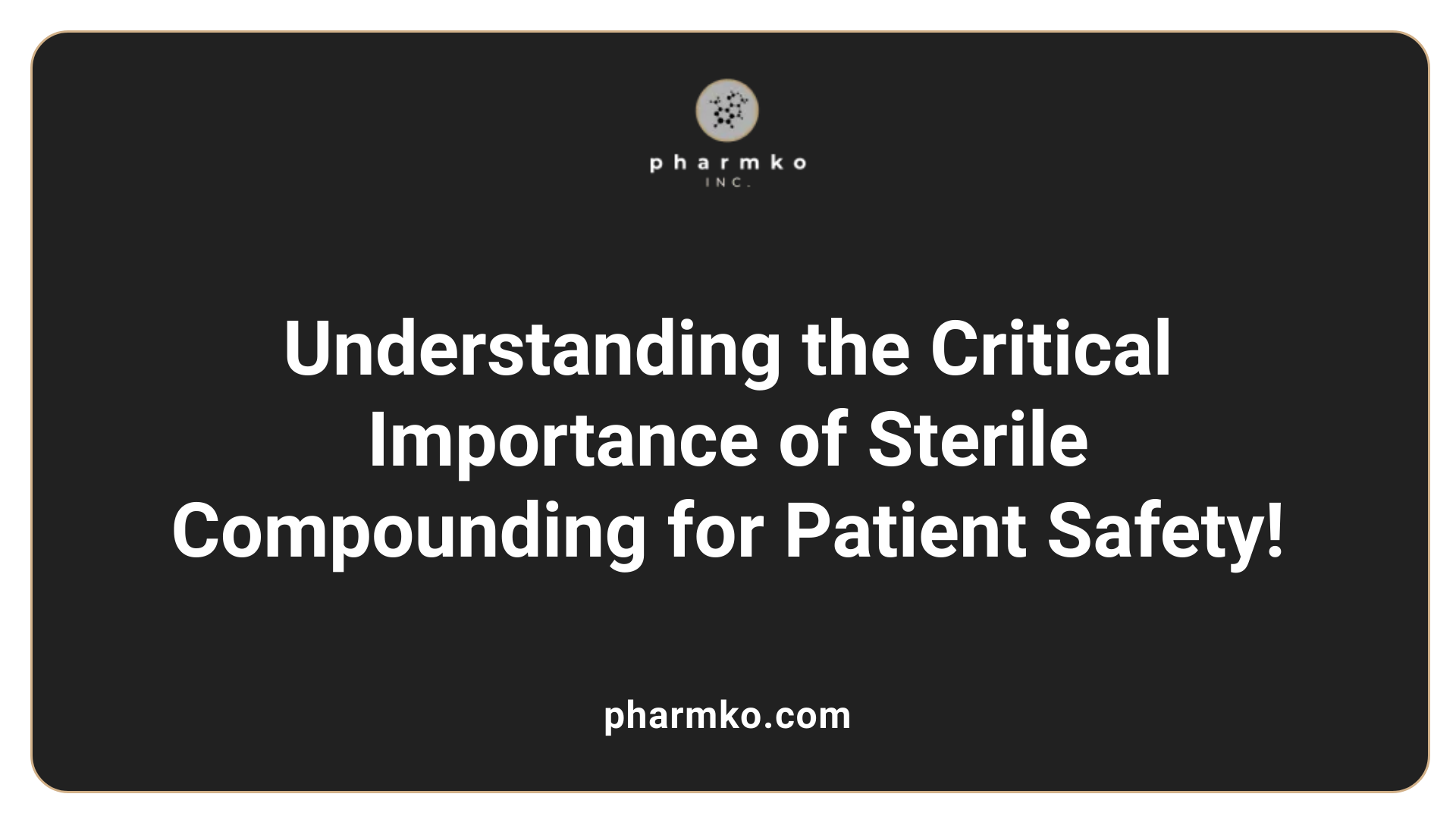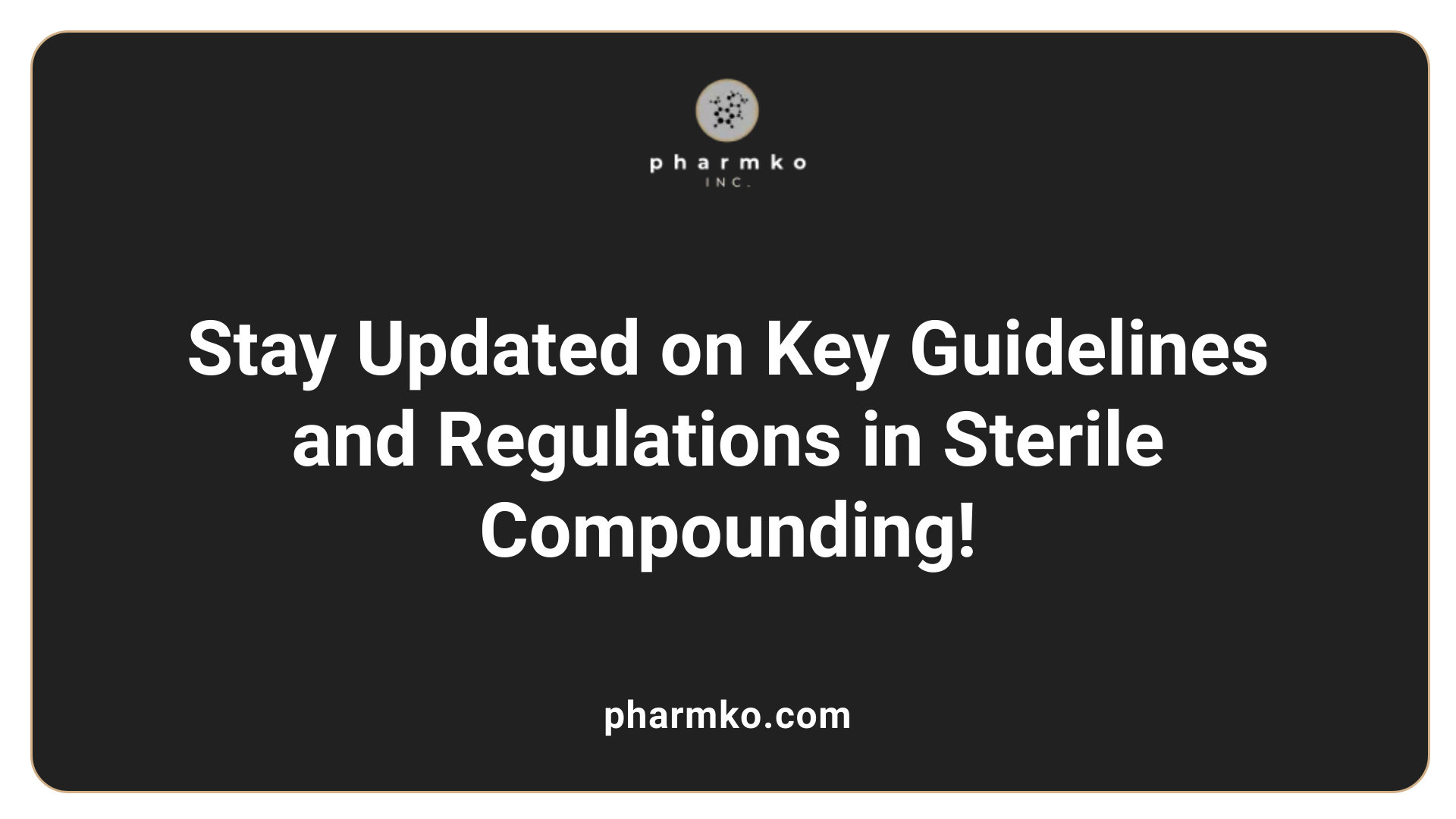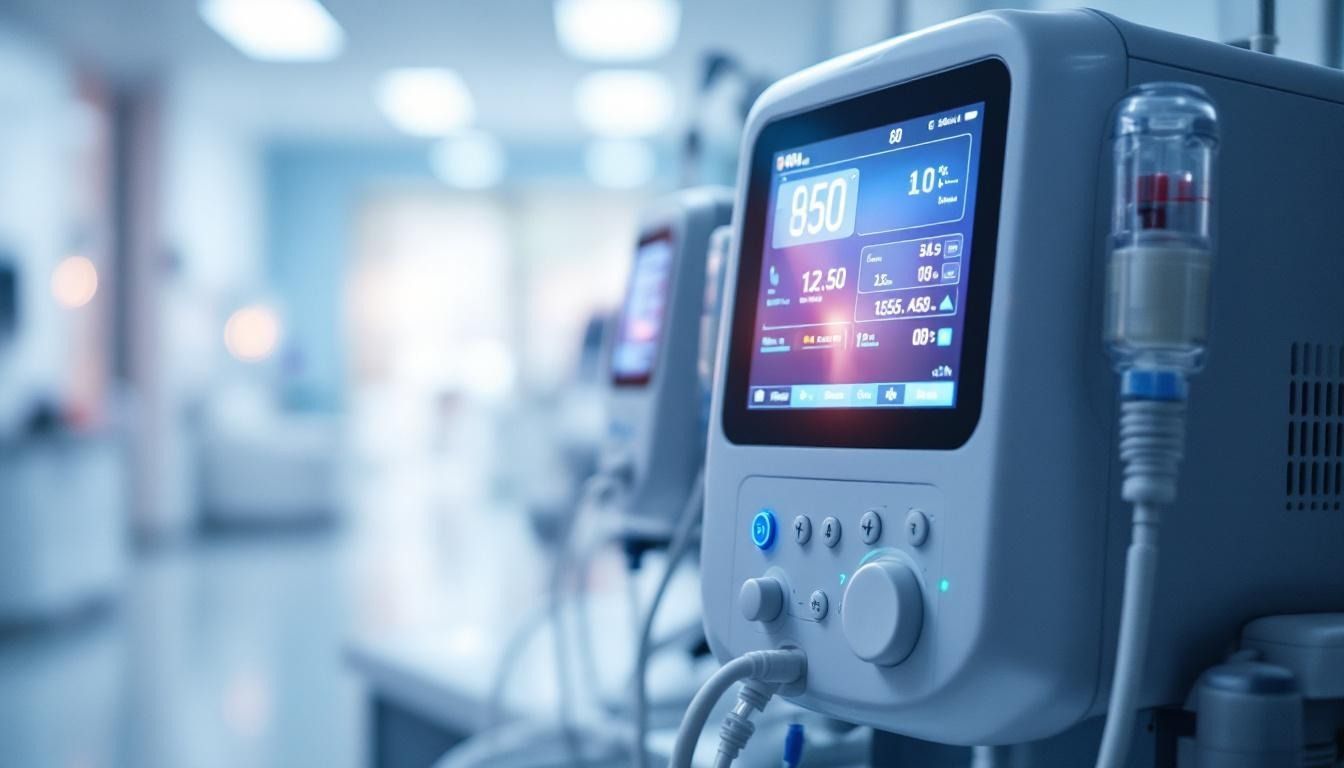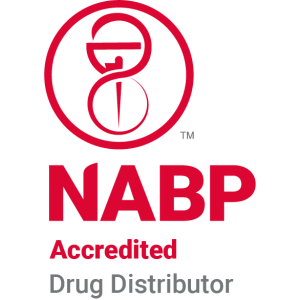How does sterile compounding support renal patients?
Introduction
In the intricate and demanding world of renal care, sterile compounding serves as a pivotal element in ensuring the safety and efficacy of treatments for patients with acute kidney injury (AKI) and chronic kidney disease (CKD). As renal conditions often necessitate complex medication regimens with precise requirements, the customization and safety provided by sterile compounding are indispensable. This article explores how sterile compounding supports renal patients, emphasizing its implications for patient safety, therapeutic outcomes, and regulatory compliance.
Understanding Sterile Compounding

What is sterile compounding and why is it important?
Sterile compounding is the meticulous process of preparing medications in a controlled environment to eliminate harmful microorganisms. This practice is critical for any medications that are administered through injection, intravenous (IV) routes, or other means that bypass the body's natural defenses.
Without appropriate sterile techniques, patients face a higher risk of severe infections and complications that could be life-threatening. Sterile compounding must adhere to stringent regulatory guidelines, which ensures that the medications are not only safe but also effective.
In the context of renal patients, where immune systems may already be compromised, the importance of sterile compounding becomes even more pronounced. It plays a vital role in the safety of injectable therapies and IV fluid administrations, protecting patient health.
Importance in intravenous and injectable medications
The preparation of intravenous and injectable medications involves unique challenges that require the implementation of sterile compounding processes. Here are some reasons why it is particularly significant:
- Patient Safety : Ensures medications are free from contaminants, reducing infection risks.
- Customized Treatments : Allows for the creation of tailored medications to meet specific patient needs, especially for those with renal issues who might have allergies or unique dosing requirements.
- Regulatory Compliance : Adheres to regulations such as USP <797>, ensuring the highest standards in medication preparation.
- Equipped Cleanrooms : Utilizes cleanroom environments to maintain sterility, preventing contamination during preparation.
By emphasizing sterile compounding in renal care, healthcare providers can improve patient outcomes, especially for those requiring intricate treatment protocols.
Medications Requiring Sterile Compounding

What types of medications require sterile compounding?
Sterile compounding is essential for various medications, particularly those administered via routes such as:
- Injection
- Intravenous infusion (IV)
- Intraocular delivery
- Intrathecal administration
These preparations are vital for patients unable to use commercially available formulations for various reasons, including allergies or other specific health conditions such as rare diseases.
According to USP General Chapter <797> , the standards for sterile compounding emphasize minimizing risks, such as contamination, infection, and dosing errors that could cause significant harm. Key aspects include:
| Aspect | Details | Importance |
|---|---|---|
| Personnel Training | Must ensure all staff are properly trained in aseptic techniques and compounding processes. | Reduces the likelihood of human error. |
| Environmental Controls | Requires strict protocols for cleanroom standards and air quality. | Protects against external contamination. |
| Quality Assurance Practices | Regular evaluations and adherence to protocols. | Ensures the safety and efficacy of compounded medications. |
What are the standards to prevent contamination and errors?
Recent revisions to USP <797> , effective from November 2023, further enhance these guidelines, ensuring that they meet contemporary scientific and clinical needs. Such updates contribute significantly to maintaining the highest levels of patient safety and medication effectiveness, which is particularly critical for vulnerable patient populations, including those with renal issues.
Pharmacist Contributions in Sterile Compounding

What are the essential roles of pharmacists in sterile compounding?
Pharmacists play a crucial role in sterile compounding, ensuring that medications like intravenous solutions are prepared in environments free from contamination. Their responsibilities encompass a variety of tasks aimed at maximizing patient safety, starting with compliance to standards set by regulatory bodies such as the United States Pharmacopeia (USP).
To effectively mitigate contamination risks, pharmacists utilize equipment such as laminar airflow hoods, and they maintain strict adherence to aseptic techniques during the compounding process. This meticulous attention to detail ensures that compounded sterile products are safe for administration to patients, particularly for vulnerable populations like those with renal issues.
Additionally, these professionals are tasked with managing workplace hazards, including biological and chemical risks, as well as addressing ergonomic concerns to safeguard their health. The role of a Board-Certified Sterile Compounding Pharmacist (BCSCP) further emphasizes the importance of advanced knowledge and ongoing education in the field, which are critical to adapting to continuously evolving industry standards.
Regulatory compliance and safety standards
Regulatory compliance is a cornerstone of sterile compounding. Pharmacists are required to adhere to federal regulations as outlined in the Drug Quality and Security Act (DQSA) and the standards set by USP <797>. These frameworks are integral for ensuring the safety and efficacy of compounded medications, which is essential given the higher risks associated with administering sterile preparations.
Through continuous education and validation of procedures, pharmacists not only uphold compliance but also contribute to quality improvement in clinical settings. This rigorous approach minimizes microbial contamination risks and enhances patient outcomes. The ongoing revisions to compounding standards ensure that pharmacists remain at the forefront of safe medication practices, particularly relevant for patients with renal problems who may have compromised immune systems.
In summary, pharmacists are essential in sterile compounding, focusing on patient safety, adherence to regulatory frameworks, and the critical need for tailored medications for individual health needs.
Guidelines and Regulations in Sterile Compounding

What are the guidelines and regulations for sterile compounding?
The guidelines for sterile compounding are primarily outlined in the USP General Chapter <797>. This chapter establishes minimum standards for the preparation of compounded sterile preparations (CSPs). Its primary goal is to minimize risks associated with microbial contamination while ensuring proper aseptic techniques are consistently applied in the preparation process.
To enhance safety, the guidelines encompass critical areas such as personnel training, quality assurance, labeling, and documentation requirements. They categorize CSPs into Category 1 and Category 2 based on specific preparation conditions and the necessary beyond-use dates (BUDs).
Recent changes to USP <797>
Recent updates to USP <797> as of November 1, 2023, reflect significant clarifications and enhancements. These revisions align <797> with related chapters <795> (non-sterile compounding) and <800> (handling hazardous drugs), emphasizing a comprehensive approach to compounding practices. The new guidelines introduce specifications for Immediate-Use CSPs, offering clearer instructions for situations where time-sensitive preparation is critical.
Crucially, the updates integrate advancements in scientific understanding, introducing concepts like 'Water Activity' to better manage contamination risks during compounding. By adapting to contemporary practices, the USP aims to bolster patient safety and efficacy in medication administration, which is vital for vulnerable populations, including those with renal conditions.
Benefits of Sterile Compounding for Renal Patients

Enhanced safety and therapeutic outcomes
Sterile compounding plays a critical role in ensuring patient safety, particularly for those with renal issues. The process is performed in cleanroom environments that maintain sterility, reducing the risk of microbial contamination. This is essential for renal patients who may have compromised immune systems, as even minor infections can lead to severe complications.
Furthermore, adherence to strict regulations and protocols, such as the Drug Quality and Security Act (DQSA) and USP standards, enhances the safety of compounded medications. Compliance with these standards helps ensure that renal patients receive medications with minimized risks of contaminants, thus enhancing therapeutic outcomes.
Customization of medication regimens
A significant advantage of sterile compounding is the ability to tailor medications to meet the specific needs of renal patients. These patients often face unique challenges, including allergies and unusual dosage requirements. Customizable medications can address these needs effectively, ensuring that patients receive the most appropriate treatments.
For renal patients, who might respond adversely to standard formulations, this customization can lead to improved adherence to treatments and better health outcomes. Pharmacists work collaboratively within healthcare teams to optimize medication regimens, ensuring that every renal patient receives personalized care suited to their individual health circumstances.
Sterile Compounding in Continuous Renal Replacement Therapy (CRRT)
CRRT and its role
Continuous Renal Replacement Therapy (CRRT) is a pivotal treatment for patients experiencing acute kidney injury (AKI), particularly among the critically ill. This therapy allows for slow and continuous filtration of blood, which is essential for patients with unstable conditions, such as those with severe COVID-19 complications. As the incidence of AKI has increased, particularly in ICU settings, CRRT provides a life-saving solution that helps manage sepsis and multiorgan failure associated with severe illness.
Customization and safety in CRRT medication
The efficacy of CRRT relies heavily on the intravenous medications administered during therapy. Sterile compounding plays a critical role here by enabling the customization of medications, ensuring they are prepared in clean environments free from contaminants. This is particularly important for renal patients, who may have compromised immune systems and heightened sensitivity to medication errors.
Through sterile compounding, healthcare professionals can tailor formulations to individual patient needs, mitigating risks, such as adverse drug reactions and infections. Such precision in medication preparation is necessary to enhance the therapeutic outcomes of CRRT, ultimately supporting the overall health and recovery of renal patients.
Supporting Peritoneal Dialysis with Sterile Compounding
Role of compounded medications in PD
Compounded medications play a significant role in supporting patients undergoing peritoneal dialysis (PD). These customized preparations are crucial for addressing the specific needs of renal patients, particularly those unable to tolerate standard formulations. For instance, PD patients may require specialized doses or unique combinations of medications that consider their renal function, dietary restrictions, or allergies.
Additionally, sterile compounding allows healthcare providers to customize parenteral nutrition solutions specifically for PD patients, ensuring they receive adequate nutrients to prevent deficiencies often experienced during dialysis. This is particularly vital since patients may encounter protein-energy wasting (PEW) due to inadequate oral intake.
Ensuring safety and adherence
The safety of compounded medications is paramount, especially for renal patients who might have compromised immune systems. Sterile compounding practices minimize contamination risks, ensuring that medications are prepared in a controlled environment compliant with safety standards.
Pharmacy technicians along with pharmacists adhere strictly to protocols during this process, significantly reducing the possibility of infectious complications from compounded sterile preparations. These practices enhance patient safety and improve adherence to treatment regimens, ultimately contributing to better therapeutic outcomes for individuals on PD.
Providing tailored medications not only supports the medical needs of these patients but also fosters trust and confidence in their care regimen, promoting positive health outcomes.
Nutritional Support Through Intradialytic Parenteral Nutrition (IDPN)
Role of IDPN in renal care
In patients undergoing hemodialysis, maintaining optimal nutritional status is critical, particularly to combat protein-energy wasting (PEW). Intradialytic parenteral nutrition (IDPN) serves as a vital strategy in this regard.
IDPN can supply up to 25% of a patient’s targeted nutrient intake
during hemodialysis sessions, thereby effectively mitigating nutrient losses that occur throughout the treatment. This approach is particularly beneficial for those who do not meet their nutritional requirements through oral intake or other supplements.
Clinical outcomes linked to IDPN include improvements in nutritional parameters such as serum prealbumin. Enhanced prealbumin levels correlate with better long-term survival and reduced hospitalization rates among dialysis patients.
Compounding for nutritional needs
Customized medications via sterile compounding can address unique dietary requirements for renal patients requiring IDPN. For example, patients with specific allergies or metabolic disorders may need tailored nutritional formulations to ensure safety and efficacy.
The aseptic techniques in sterile compounding ensure that these nutritional solutions remain free from contaminants, which is particularly essential for patients with compromised immune systems. Pharmacy technicians contribute significantly to these processes by maintaining strict safety standards, minimizing risks associated with compounded sterile preparations.
Compounding also adapts to the unique needs of renal patients through continuous collaboration among healthcare professionals to achieve optimal nutritional management.
Addressing Medication-Related Problems in Renal Care
Pharmacist Interventions in MRPs
Medication-related problems (MRPs) are prevalent among patients with chronic kidney disease (CKD) and end-stage renal disease (ESRD). These issues can stem from various factors, including the inability to excrete certain medications, heightened risks for drug toxicity, and increased chances of adverse drug reactions due to drug interactions. Pharmacists specializing in renal care play an essential role in identifying and addressing MRPs.
During initial evaluations, pharmacists can detect and resolve approximately four MRPs per patient. Common interventions may involve adjusting dosages or changing medication regimens for drugs affected by dialysis. These clinical modifications can be crucial, especially since many CKD patients are excluded from clinical trials, rendering standard guidelines possibly inapplicable.
Impact on Patient Outcomes
Interventions by renal pharmacists can significantly enhance patient safety and treatment effectiveness. Evidence suggests that pharmacist-led efforts can lead to reduced instances of AKI and decreased progression to advanced CKD. Notably, this also improves adherence to medication regimens and overall clinical outcomes, such as lower hospitalization rates.
In a recent study involving 47 hospitalized CKD patients, 51 instances of negative medication-related outcomes were identified, primarily related to effectiveness. Addressing these issues can align therapeutic goals with patients' needs, ultimately enhancing both their health status and quality of life.
Collaborative Approach in Managing Renal Patient Therapies
Interdisciplinary teamwork
A collaborative healthcare environment is essential for managing renal patient therapies effectively. Interdisciplinary teams involving nephrologists, pharmacists, nurses, and dietitians can significantly optimize patient care. Each member contributes unique expertise, addressing various aspects of renal health—from medication management to dietary adjustments.
For instance, renal pharmacists focus on medication-related problems, adjusting dosages, and monitoring for adverse effects. This teamwork extends to managing complex medication regimens that are common in chronic kidney disease (CKD) patients. Studies show that pharmacist interventions can effectively reduce acute kidney injury (AKI) and enhance therapeutic adherence.
Role of sterile compounding
Sterile compounding is vital for ensuring that renal patients receive safe and effective medications tailored to their specific needs. This process minimizes the risk of contamination, which is crucial given the heightened vulnerability of renal patients, many of whom are immunocompromised.
Pharmacy technicians and pharmacists must adhere to strict safety protocols to prepare customized formulations. These individualized medications can significantly improve patient outcomes by providing relief from symptoms or correcting imbalances that standard medications cannot.
By effectively leveraging sterile compounding within an interdisciplinary team, healthcare providers can enhance patient safety and therapeutic effectiveness, catering to the unique needs of those with renal conditions.
Advancements in Sterile Compounding Technology
Integration of New Technologies
The field of sterile compounding is increasingly benefiting from technological advancements that enhance medication preparation and patient safety. Automated systems and robotics are becoming integral in various compounding processes. These technologies not only streamline workflows but also reduce the likelihood of human error, especially in high-risk compounding environments.
The adoption of computerized physician order entry (CPOE) systems helps ensure that prescriptions are verified and accurately entered, significantly minimizing medication errors. Additionally, real-time monitoring devices can track environmental conditions in cleanrooms, ensuring compliance with established safety standards.
Improving Accuracy and Safety
Improved accuracy in sterile compounding not only enhances patient safety but also enhances therapeutic effectiveness. Technology-assisted workflows allow for precise measurements and consistent formulations, crucial for patients requiring specialized medications, such as those with renal conditions.
Moreover, advanced data management systems can analyze past compounding data to identify trends and potential issues, thereby preemptively addressing problems before they impact patient care. This proactive approach is especially vital for renal patients, who often face complications from improperly compounded medications, highlighting the importance of these technological advancements in safeguarding their health.
Conclusion
Sterile compounding is not merely a technical procedure but a cornerstone in the management of renal patients. Its ability to ensure medication safety, customization, and adherence to regulation makes it indispensable in renal healthcare. As we navigate the complexities of treating AKI and CKD, sterile compounding stands out as a vital process that supports better patient outcomes, emphasizing the collaborative effort necessary among healthcare professionals to achieve this goal.
References
- Intravenous fluid therapy in accordance with kidney injury risk
- How does sterile compounding improve therapy delivery? - Pharmko
- Understanding Continuous Renal Replacement Therapy (CRRT) in ...
- How does sterile compounding improve infusion therapy? - Pharmko
- Regulations Guiding Sterile Compounding Are Complex
- Intradialytic parenteral nutrition for patients on hemodialysis
- Partnering with a Renal Pharmacy - Fresenius Medical Care
- Patient education: Peritoneal dialysis (Beyond the Basics) - UpToDate
- End Stage Renal Disease (ESRD) | Johns Hopkins Medicine
- Pharmaceutical care practice in patients with chronic kidney disease













